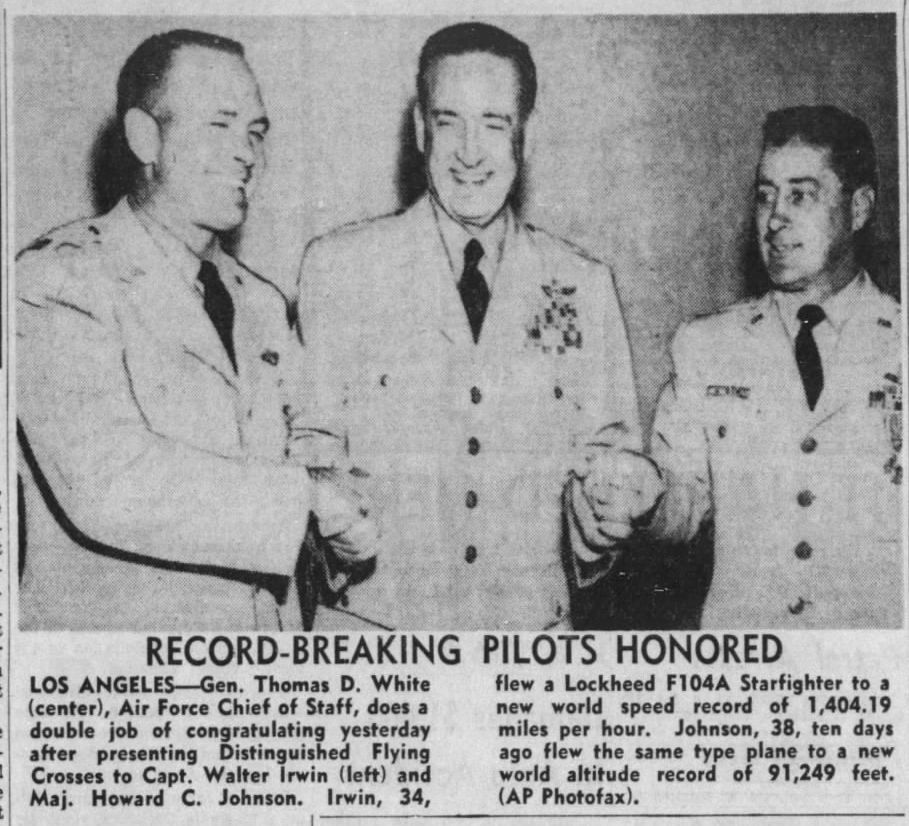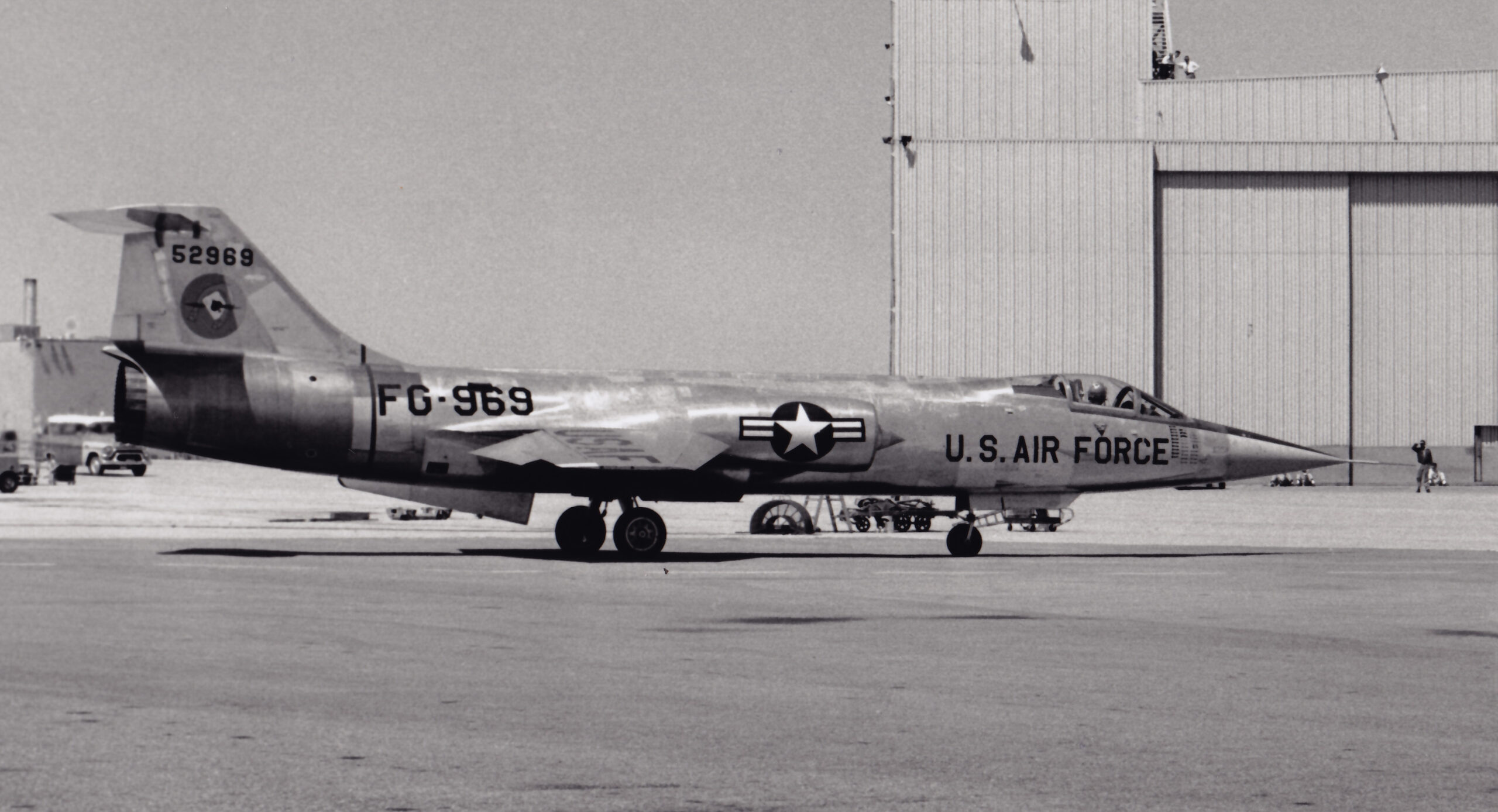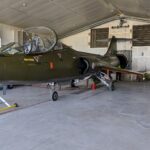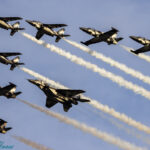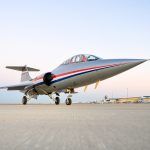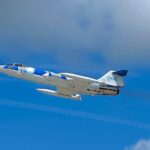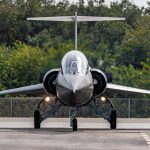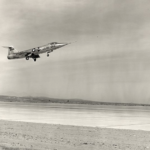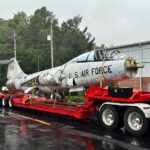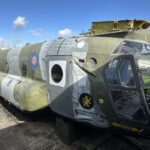By Stephen Chapis
On March 25, 1955, Lockheed test pilot Ray Goudey took XF-104 #2 out to a world speed record of 1.79 Mach — 1,150mph (1,850km/h) — that was fitted with a “small”, non-afterburning Wright J65 turbojet. Just a month later on April 27, Joe Ozier flew a J79 powered F-104A to an incredible, albeit unofficial, 1,320mph (2,114km/h): the magic Mach 2. Yes, the Starfighter was quickly living up to the moniker “Missile with a man in it”. However, there was more to come. Much more.
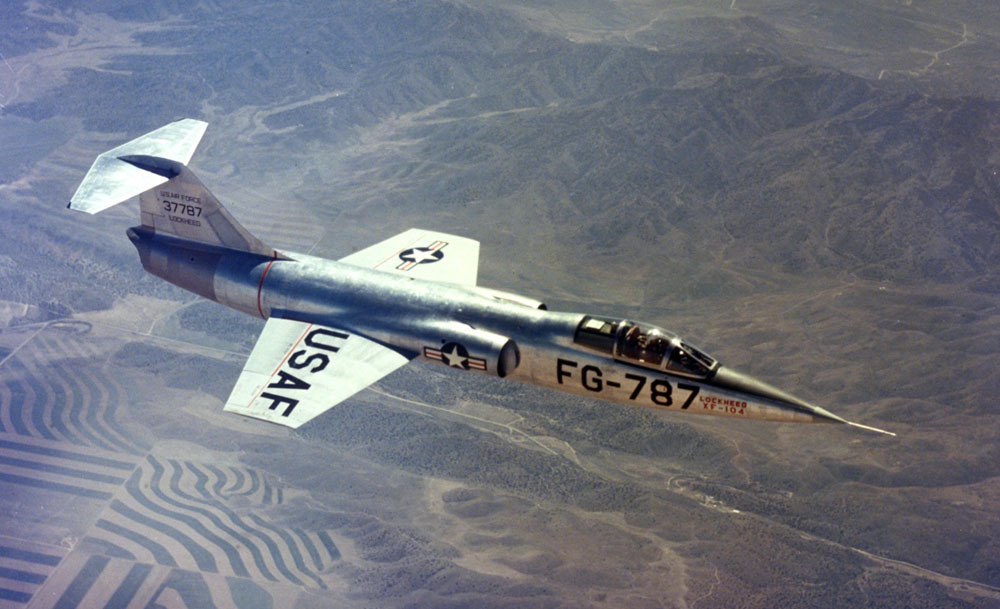
On December 12, 1957, during Operation Fire Wall Major Adrian Drew flew the sole McDonnell JF-101A Voodoo (USAF #53-2426) to an absolute world speed record of 1,207.6mph (1,943.43km/h). Six months later Captain Walter C. Irwin of the 83rd Fighter Interceptor Squadron (FIS) was chosen to challenge the record. In December 1957, the 83rd FIS, based at Hamilton AFB, CA, became the first Air Defense Command squadron to receive the Starfighter. While the 34-year-old Irwin was a decorated World War II P-47 pilot, and a flight commander with the 83rd, he had less than 40 hours in the F-104 when he flew down to Edwards AFB, CA on Monday, May 12 to commence a series of practice flights. Irwin’s low time in the jet was not uncommon among the four United States Air Force pilots that set world records in the Starfighter in 1958: all had less than 40 hours in type.
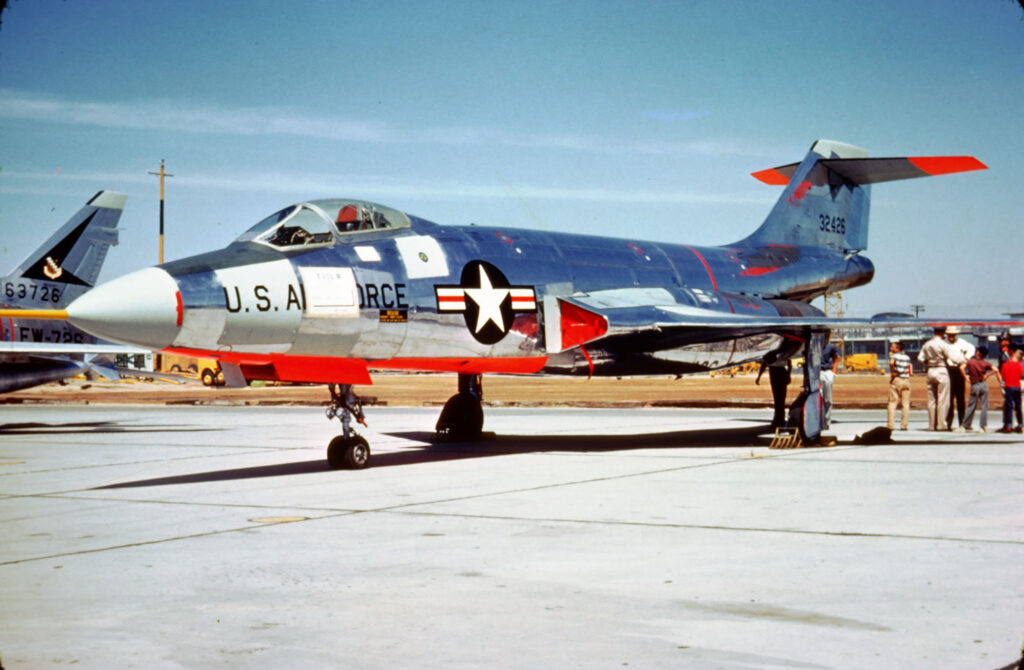
For the record attempt, Irwin would fly the first pre-production YF-104A (USAF #55-2969). To qualify as an official record, the National Aeronautical Association would administer the records and submit the results to Federation Aeronautique Internationale for certification. The runs would be made at 40,000ft (12,192m) through a 10.1-mile timed course with 4.65-mile entry/exit points. While within that 19.4-mile corridor, Irwin could not stray off his altitude more than + 162ft (50m), no small feat at 1,500mph (2,414km/h). The runs were scrutinized by four observers and two cameras on the ground and a pair of T-33s orbiting 1,000ft (305m) over the entry/exit points.
The USAF didn’t choose to make this record attempt just for the sake of setting a record. They had a plan. Nine days prior, on May 7, Maj. Howard “Scrappy” Johnson, also a member of the 83rd FIS, took an F-104 up to 91,249 feet (27,812m) to set a new absolute world altitude record (as we previously covered in this article). If Irwin could best the record set by Maj Drew in the JF-101A, Lockheed’s F-104 would achieve a first in aviation history.
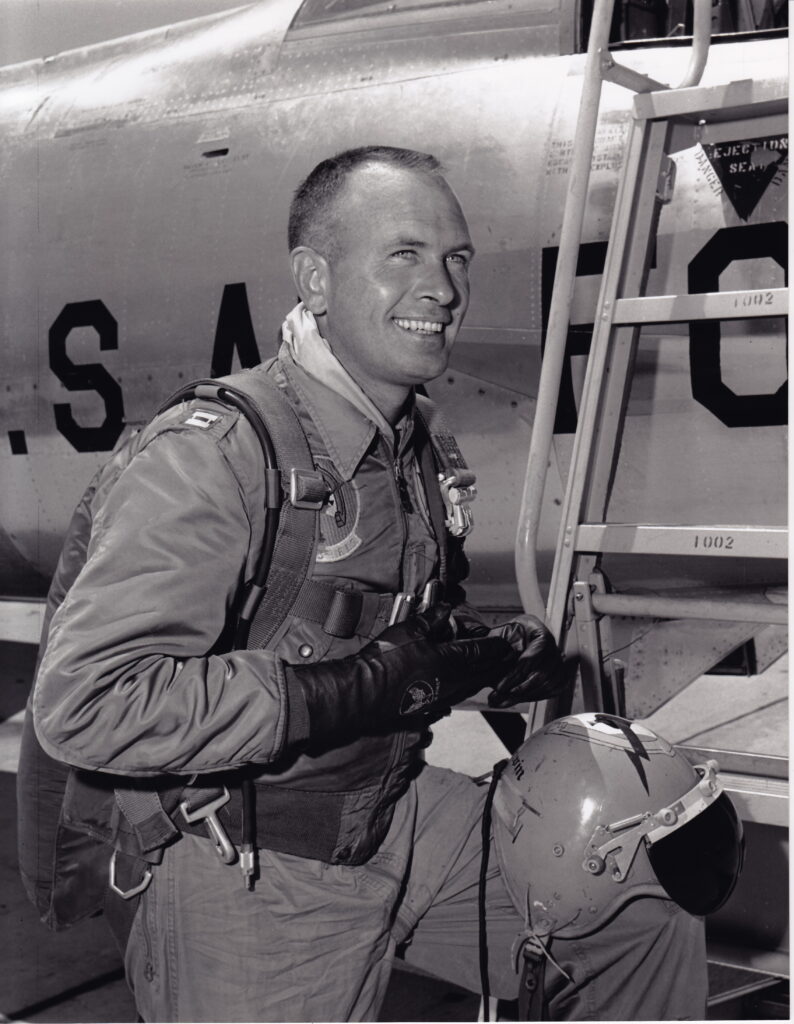
On May 13 and 14, Irwin made half-dozen flights to get a feel for both the aircraft and the course. On the May 15, he made three flights, on the first he strayed off altitude. The second flight was a good run, but not fast enough. The downwind run on his third attempt was clocked at 1,500mph (2,414km/h), but after he completed his teardrop turn to re-enter the course a wire in the afterburner nozzle controller broke and the run was aborted.
When Irwin was selected for this record attempt, he was told by several USAF generals that they would like to get the speed record for Armed Forces Day, on Saturday, May 17. Irwin’s first run at 0650hrs on Friday, May 16 averaged 1,435mph (2,309km/h): a new record…or so they thought. Word came from the course that a camera had failed. The run was disqualified. Irwin was airborne again an hour later, but as he was climbing to altitude, he received word that one of the T-33s, with the observers onboard, had to abort, but luckily the spare aircraft took its place. Irwin’s downwind run through the course was clocked at 1,465.41mph (2,358km/h). It was looking good. He made a smooth teardrop turn and re-accelerated as ground controllers vectored him back into the course. His upwind run was hampered by a 70-knot headwind, but he still made the run at 1,342.97mph (2,161km/h) for a two-run average of 1,404.19mph (2,260km/h), almost 200mph faster than the Voodoo.
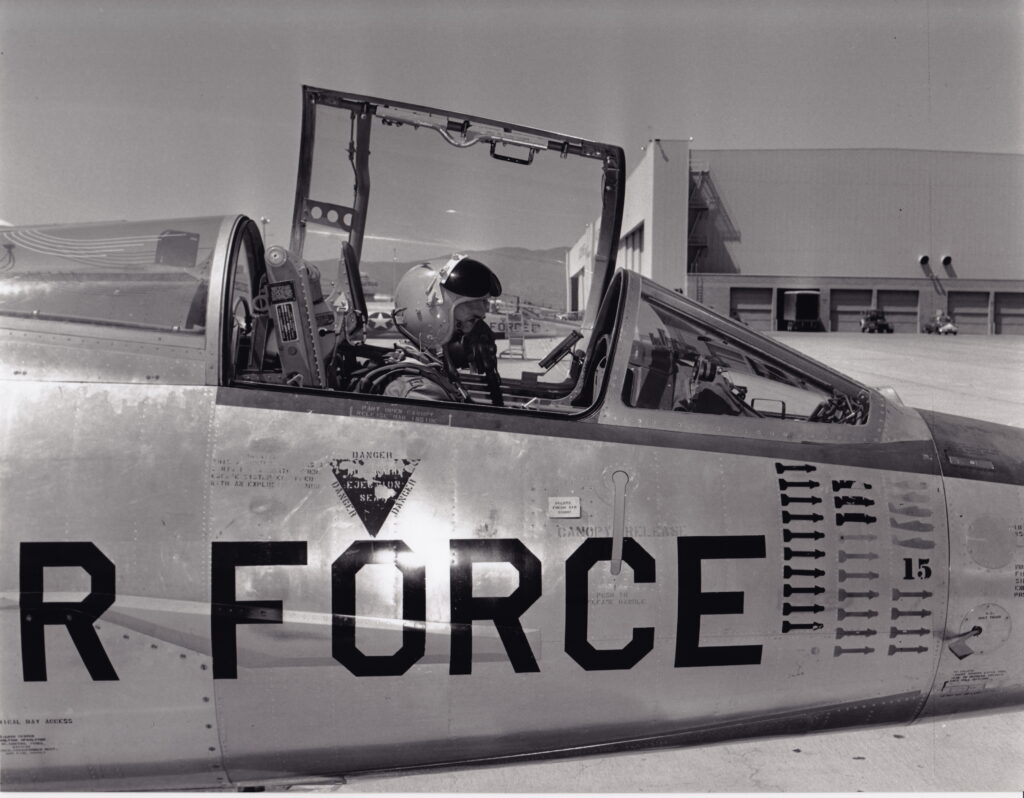
When Irwin touched down, he’d been in the air for just twenty minutes, and it took just twenty seconds to set the record. Although it would take four hours to process the data and get the record certified, it is alleged that when an unnamed general heard the two-run average speed, he said “I’ll buy that” and marched off to tell the press that the F-104 was the first aircraft in history to hold the world speed and altitude records simultaneously.
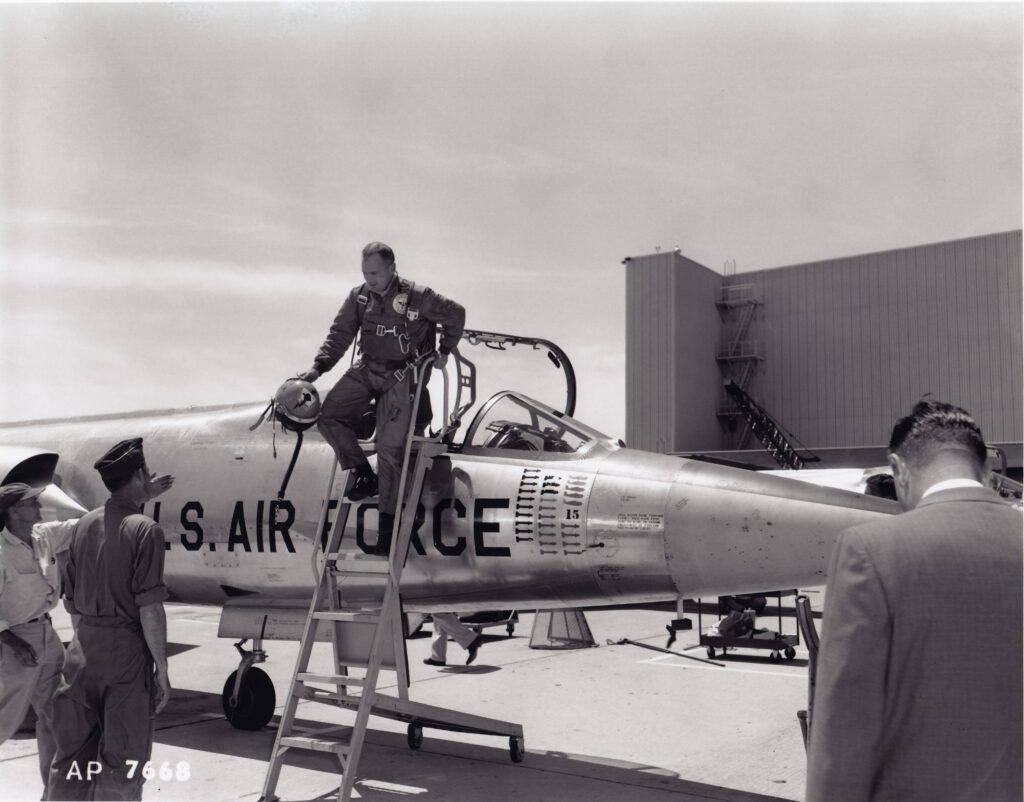
In the post-flight press conference, during which General Thomas D. White, Air Force Chief of Staff, presented Capt Irwin with the Distinguished Flying Cross and simultaneously shook his hand and that of Maj Johnson, who received the Collier Trophy later that year. During the conference Irwin committed quite the faux pas. A reporter asked if this was the most exciting day of his life, to which Irwin replied, “I would say so! Bar none!” Well, Irwin’s wife of four years was in attendance, and she exclaimed with mock sarcasm, “Thanks a lot!” They both laughed as Irwin corrected himself, “Make that the second most exciting day!”, because certainly their wedding was more exciting than being part of aviation history, right?
